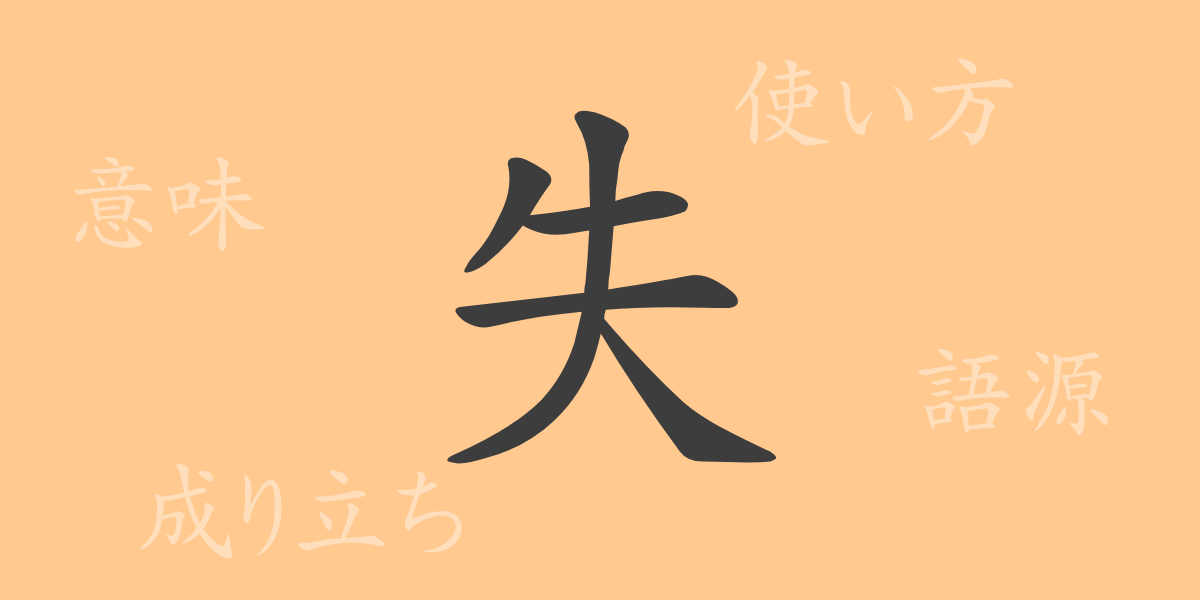In written Japanese, kanji characters play roles beyond mere letters. These pictographs, used to express emotions, concepts, and various daily occurrences, become more captivating the deeper one delves into their origins and modern applications. Today, we focus on the common kanji “失(しつ)” and explore its etymology, meanings, usages, and the idioms and expressions rooted in it.
Origins of 失 (Etymology)
The kanji “失(しつ)” evolved from ancient Chinese oracle bone script. Originally, it symbolized a hand dropping an object, thus carrying meanings related to failure and loss. Over time, the character became more abstract, resulting in the present form “失(しつ).” The depth of its meaning stems from its simple yet expressive origin.
Meanings and Usage of 失
The primary meaning of “失(しつ)” is “to lose” or “to miss,” applicable to both tangible items and abstract concepts like opportunities or states. It is also used to denote negative events such as failure or mistakes. Often combined with other kanji to form compound words, “失(しつ)” helps express more complex ideas.
Readings, Stroke Count, and Radical of 失
The kanji “失(しつ)” holds a fundamental place in the Japanese writing system, both in terms of its readings and structure.
- Readings: The on’yomi (音読み) is “シツ,” and the kun’yomi (訓読み) is “うしなう.”
- Stroke count: 5 strokes in total.
- Radical: The radical is “大(だい),” but “失(しつ)” functions as an independent character as well.
Idioms, Phrases, and Proverbs Using 失
The kanji “失(しつ)” is embedded in numerous Japanese idioms, phrases, and proverbs, each carrying unique meanings and nuances. For example:
- 失敗(しっぱい): A mistake or failure.
- 失望(しつぼう): Disappointment from unmet expectations.
- 失礼(しつれい): Rudeness or disrespectful behavior or words.
- 失言(しつげん): An inappropriate remark.
- 失業(しつぎょう): The state of losing one’s job.
These expressions are frequently used in daily conversations and business settings, playing a crucial role in accurately conveying emotions and situations.
Conclusion on 失
The kanji “失(しつ)” is central to communication in Japanese, encompassing history, meaning, and usage. This seemingly simple character is indispensable for expressing a wide range of situations and emotions, deeply rooted in Japanese linguistic culture. Whether in everyday communication, literature, or business documents, the usage of “失(しつ)” is vast and its importance immeasurable. Understanding such kanji is vital for conveying resonant messages through language.

























